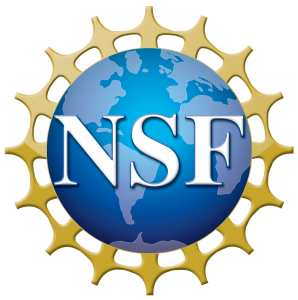
“Neighborhood Environments as Socio-Techno-bio Systems: Water Quality, Public Trust, and Health in Mexico City (NESTSMX)” is an NSF-funded multi-year collaborative interdisciplinary project that brings together experts in environmental engineering, anthropology, and environmental health from the University of Michigan and the Instituto Nacional de Salud Pública. The PI is Elizabeth Roberts (anthropology), and the co-PIs are Brisa N. Sánchez (biostatistics), Martha M Téllez-Rojo (public health), Branko Kerkez (environmental engineering), and Krista Rule Wigginton (civil and environmental engineering).
Our overarching goal for NESTSMX is to develop methods for understanding neighborhoods as “socio-techno-bio systems” and how these systems relate to people’s trust in (or distrust of) their water. In the process, we will collectively contribute to our respective fields of study. But we also see this as an experiment in how to work with, and write for, colleagues from different disciplinary backgrounds.
NESTSMX works with families living in Mexico City, participants in ELEMENT (Early Life Exposures in Mexico to ENvironmental Toxicants): an ongoing longitudinal birth-cohort chemical-exposure study. Our research involves ethnography and environmental engineering fieldwork with these families, which we will combine with biological data previously gathered by ELEMENT. Our focus will be on the infrastructures and social structures that move water in and out of neighborhoods, households, and bodies.
What do we mean by “socio-techno-bio systems”?
Engineering and the social sciences alike are increasingly focused on how we live in material worlds that are complex conglomerations of the built environment and human behavior. By this we mean that the world is shaped by the things people do and by the physical infrastructure or landscape: neither fully determines the other; rather, they are constantly interacting in complex ways. For this reason, social scientists can’t simply focus on what people say and do without looking at their environment; equally, engineers can’t just build physical solutions to technical problems without understanding how people think and act.
In a similar vein, social and life scientists are increasingly coming to the conclusion that it’s crucial to study social and biological processes together rather than separately, and to understand how they impact one another through dynamic feedback loops.
These emergent overlapping approaches in engineering and the social and life sciences demonstrate the need for collaborative work that brings together biological, social, and built-environment data. This is particularly important in urban contexts, like the neighborhoods in Mexico City that NESTSMX will study. The way people adapt to water infrastructure in their neighborhood has ongoing and cascading repercussions for their social and biological lives. Complex feedback loops develop among neighborhood infrastructures, environmental and socioeconomic conditions, and residents’ biological trajectories.
To understand water infrastructure and trust, then, we need to develop multidimensional methods—what we are calling socio-technical-biological systems, or socio-techno-bio systems for short.
What does a socio-techno-bio systems approach involve in practice?
NESTSMX will use this socio-techno-bio systems approach to study water in Mexico City. We will be examining the dynamic feedback loops among water infrastructure, residents’ interactions with their environments, and biological markers on people’s bodies.
We will examine these dynamics in several steps. First, we will observe ethnographically how trust and distrust in water is produced through its availability, quality, and use in daily life—and how, in turn, this trust shapes neighborhood organization and household management such as food preparation and consumption. Second, we will look at how these socio-techno systems of trust and water shape people’s biological processes, such as their exposure to toxins like lead or bacteria. Thirdly, we will connect these biological processes back to the socio-techno by looking at how biological processes shape the neighborhood environment; for instance, how neighborhoods organize to remove toxins that are making people sick.
An example of a socio-techno-bio feedback loop
Unequal distribution of water and variable trust in water infrastructure may lead to differing exposures to waterborne toxicants and pathogens, and/or higher consumption of sugary bottled beverages instead of water. In other words, if water is hard to come by, then people are more likely to drink soda, and if people don’t trust that the water in their neighborhood is safe, they, too, may turn to more dependable drinks like store-bought soda.
The differing exposures to clean and questionable water, and soda vs. water drinking behaviors, may affect people’s biology at molecular and clinical levels— if, for instance, they become heavy or obese. Obesity and other socially stigmatized bodily states may then make it more difficult for people to advocate at individual or neighborhood levels for services such as fair water distribution in their neighborhood. And this, in turn, can create a feedback loop to reinforce both inequality and ill health.
NESTSMX Objectives
Through its socio-techno-bio methodology NESTSMX will offer important new tools to examine the general and specific neighborhood environments that contribute to social, environmental, and health inequalities in contemporary Mexico, tools that can then be extrapolated to other settings.
The socio-techno-bio methodology will be developed through several phases:
1) Household Audits (January 2019–August 2021). We will conduct intensive household audits from selected ELEMENT participant neighborhoods, focusing on the production of trust in water infrastructures, water quality, and levels of social cohesion and security. The audits will include fine-grained ethnographic and engineering observations of household water management and use, and household health status.
2) Multidimensional Analysis. We will pose and test novel hypotheses regarding associations between newly acquired household audit and assessment data and behavioral and biological data from ELEMENT participants.
Our aim is not to construct a static quantifiable measure that can be used to study any single complex phenomenon. Rather, we seek to develop a systematic method for investigating and linking the dynamic specificities of how built environments, behaviors, and biological processes constantly shape and reshape each other. This method will be shared publicly to enable other researchers to replicate our approach.












